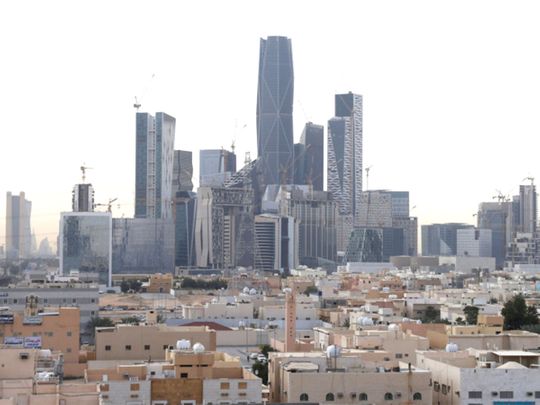
Riyadh: Saudi Arabia sold $7 billion in dollar-denominated bonds as it follows other Middle Eastern states that have tapped the market in recent weeks to bolster their finances in the face of the coronavirus pandemic and plunging energy prices.
The offering marks the second time this year the world’s largest oil exporter has turned to international capital markets, as Crown Prince Mohammed bin Salman pushes ahead with plans to open up the economy and wean it off crude. In December, the government sold a $29 billion stake in energy giant Saudi Aramco through the largest initial public offering in history.
The nation sold $2.5 billion in bonds due in 5.5 years, $1.5 billion of debt due in 10.5 years and $3 billion in 40-year debt. All tranches were launched with lower costs than initially planned as demand topped $42 billion. (The shorter notes pay spreads of 260 and 270 basis points over US Treasuries and the longer bonds offer a 4.55 per cent yield.)
“It doesn’t have a choice but to borrow from the bond market,” said Richard Segal, a senior analyst at Manulife Investment in London. “With oil prices lower and soon production lower, and an economic support package recently in place, the government’s deficit and financing requirements have jumped.”
Budget priorities
Citigroup Inc., Goldman Sachs Group Inc. and HSBC Holdings Plc managed the sale. It came after Abu Dhabi and Qatar attracted larger-than-normal demand from global bond investors last week, raising $17 billion between them.
Saudi Arabia’s economy is coming under strain after Brent crude prices sank about 50 per cent this year to under $30 a barrel. While the kingdom has a low ratio of debt to gross domestic product, it needs an oil price of almost $80 to balance its budget. Its deficit will more than double in 2020 to almost 10 per cent of GDP, according to Moody’s Investors Service.
Need to watch reserves
It also has smaller buffers than when oil prices last crashed in mid-2014. Foreign reserves have declined to less than $500 billion from roughly $730 billion then. The government plans to raise its debt ceiling from 30 per cent to 50 per cent of economic output and said it could borrow as much as 100 billion riyals ($26.6 billion) this year.
$ 500 billion
Saudi foreign reserves have dipped below this figure.“Oil prices are a significant drag on the Saudi economy,” said Todd Schubert, head of fixed-income research at Bank of Singapore Ltd. Still, “the current environment affords an opportunity to pick up a solid investment-grade sovereign at valuations that are attractive versus historical spread levels.”
Saudi Arabia last came to the international debt market in January, raising $5 billion. Finance Minister Mohammed Al-Jadaan said the kingdom may issue an additional $4 billion in foreign bonds this year, though that was before oil prices plunged.
“At this oil price level, there is pain for everyone, and it is not sustainable,” said Mohieddine Kronfol, the chief investment officer for Middle Eastern and North African fixed income at Franklin Templeton. “While we are budgeting for a lower oil price for longer, we do expect to see a new oil price regime to emerge and think we could be back over $45 per barrel before year-end.”
Franklin Templeton raised its estimate of 2020 bond sales by governments and companies in the Gulf Cooperation Council to $105 billion, from an earlier forecast of $90 billion.








